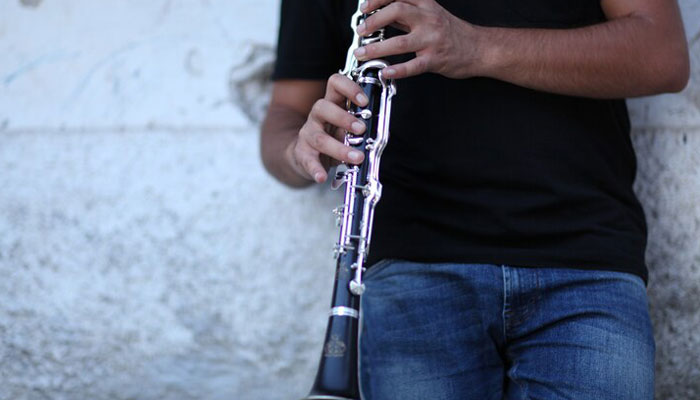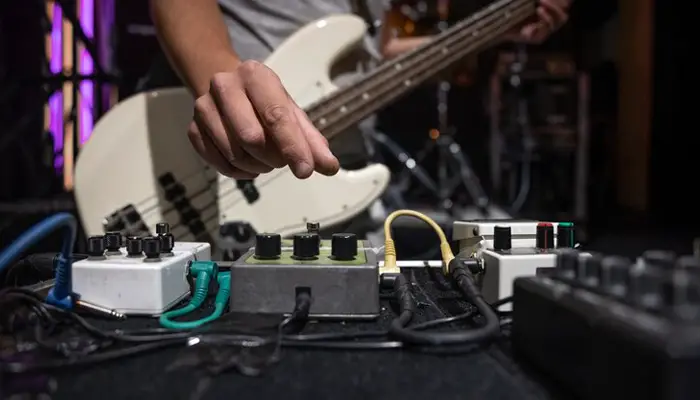
Have you ever wondered, “What does a clarinet sound like?”
It’s a question often asked, yet not easily answered due to the wide variety of sounds this versatile instrument can produce.
In this comprehensive guide, we’ll delve into 10 unique and fascinating clarinet sounds, shedding light on the techniques behind them and exploring the genres best suited for this remarkable instrument.
We will also discuss some of the different types of music that are best suited for this amazing instrument!
Table of Contents
10 Unique and Interesting Clarinet Sounds
1. Flutter Tongue:
Flutter Tongue is a dynamic technique in clarinet performance characterized by the rapid fluttering of the tongue against the reed. This versatile technique allows clarinetists to produce thrilling and lively sounds reminiscent of various natural phenomena or musical styles.
From mimicking the rhythmic croak of a frog in classical repertoire to infusing vibrant jazz-like tones with energy and excitement, Flutter Tongue adds a unique dimension to clarinet performances, captivating audiences with its expressive versatility.
2. Pucker Technique:
The Pucker technique, also known as “cheek puffing,” is a distinctive method employed by clarinetists to manipulate the instrument’s sound production.
By puckering or sucking in their cheeks while blowing into the clarinet, performers create a resonant timbre akin to the brassiness of a trumpet. This technique’s adaptability allows for a spectrum of sounds suitable for various musical styles, from classical to contemporary.
Whether producing bold fanfare-like passages or soft, mellow tones, the Pucker technique enriches clarinet performances with its unique sonic palette and expressive potential.
3. Lip Trill:
Lip Trill is a versatile clarinet technique characterized by the rapid alternation between adjacent pitches through controlled lip movement. This technique generates fast, trilling sounds adaptable to different musical contexts, enhancing the expressiveness and agility of clarinet performances.
Whether emulating the intricate melodies of birdcalls in classical compositions or infusing jazz with dynamic energy and improvisational flair, Lip Trill adds a distinctive and engaging element to clarinet music, captivating listeners with its virtuosic charm and versatility.
4. Vibrato:
Vibrato is a fundamental technique employed by clarinetists to enhance the expressiveness and emotive quality of their performances. By subtly fluctuating the pitch of sustained notes, performers create a rich, vibrating sound that imbues clarinet melodies with warmth and depth.
From mimicking the soulful resonance of a violin in classical repertoire to evoking romanticism and sentimentality in lyrical passages, Vibrato enriches the emotional landscape of music, captivating audiences with its nuanced and evocative sonic texture.
5. Octave:
The Octave technique in clarinet performance involves producing high-pitched tones by overblowing certain fingerings, resulting in a doubling of the instrument’s fundamental frequency.
This versatile technique offers a wide range of musical expression, allowing clarinetists to echo the ethereal sweetness of a flute or command attention with powerful, commanding notes.
Whether soaring gracefully in melodic passages or adding brilliance and clarity to virtuosic performances, Octave adds dimension and versatility to clarinet music, enriching compositions with its luminous timbre and expressive range.
6. Glissando:
Glissando, a hallmark technique in clarinet performance, imparts a seamless sliding effect reminiscent of a slide whistle or a soulful wail. Clarinetists employ this technique creatively to evoke a myriad of emotions and atmospheres in their music.
From ethereal glissandi cascading through melodic passages to bold, dramatic slides punctuating expressive phrases, Glissando serves as a versatile tool for musical storytelling, enriching compositions with its dynamic range and evocative charm.
7. Legato:
Legato, characterized by smooth, connected sounds akin to the human voice, is a cornerstone technique in clarinet performance.
Whether weaving haunting melodies that linger in the air or seamlessly transitioning between intricate harmonies, Legato showcases the instrument’s unparalleled versatility and expressiveness.
Clarinetists harness the fluidity of Legato to imbue their performances with elegance and grace, captivating listeners with its seamless phrasing and emotive depth.
8. Staccato:
Staccato, defined by its short, crisp notes, is a fundamental technique in clarinet performance, ideal for playful or rhythmic passages. Clarinetists utilize this percussive technique to mimic the staccato articulation of other instruments or infuse compositions with lively energy and rhythmic drive.
From sprightly staccato runs dancing across the clarinet’s registers to bold, punctuated accents punctuating vibrant musical textures, Staccato adds a dynamic element to performances, captivating audiences with its rhythmic precision and expressive vitality.
9. Marcato:
Marcato, known for its bold, emphatic articulation, generates dramatic tones that command attention and leave a lasting impression.
Whether echoing the grandeur of operatic arias or punctuating orchestral passages with majestic flourishes, Marcato adds weight and intensity to clarinet performances.
Clarinetists harness the power of Marcato to convey emotion and drama, captivating listeners with its commanding presence and expressive depth.
10. Pedal Tone:
Pedal Tone, characterized by its deep, resonant sound, enriches clarinet music with its depth and warmth.
From commanding presence to subtle undertones, Pedal Tone adds a unique dimension to performances, serving as a foundation for harmonic richness and expressive nuance.
Clarinetists harness the sonorous depths of Pedal Tone to evoke a sense of depth and expansiveness, captivating listeners with its immersive timbre and emotive resonance.
Exploring Clarinet Music:
The clarinet finds its home in a variety of musical genres, each uniquely suited to its expressive capabilities:
- Jazz: The clarinet’s rich, mellow tones capture the soulful essence of jazz, from smoky ballads to lively improvisations. Its fluidity and versatility make it a staple in both traditional and contemporary jazz ensembles, adding depth and character to the genre’s evolving soundscapes.
- Blues: With its emotive timbre and expressive range, the clarinet lends itself effortlessly to the raw emotion and storytelling of the blues. From mournful laments to spirited solos, its ability to convey longing and resilience resonates deeply within the blues tradition, enriching performances with authenticity and soulful expression.
- Classical: In classical compositions, the clarinet shines as a versatile and agile instrument capable of traversing intricate melodic lines and harmonious textures. Its warm, resonant tones add depth and sophistication to orchestral arrangements, chamber music, and solo repertoire, captivating audiences with its lyrical beauty and nuanced phrasing.
- Pop: In the realm of pop music, the clarinet’s bright timbre adds a unique flavor and texture to upbeat tunes and catchy melodies. Whether weaving through catchy hooks or providing a nostalgic backdrop, its versatility and versatility bring excitement and depth to pop compositions, enhancing their sonic landscape with a touch of sophistication and charm.
Conclusion: What Does a Clarinet Sound Like
We’ve explored the diverse sounds and techniques of the clarinet, showcasing its versatility and expressive range. By embracing the instrument’s endless possibilities and experimenting with new techniques, clarinetists can unlock new dimensions of creativity and captivate audiences with their performances.
So, whether you’re a seasoned player or just beginning your musical journey, grab your clarinet and embark on a boundless adventure of musical exploration and discovery.
Frequently Ask Questions
What makes the clarinet sound unique?
The clarinet’s unique sounds stem from its diverse techniques, allowing for a wide range of expressive possibilities and musical styles.
What type of music is best suited for the clarinet?
Jazz, blues, classical, and pop music all offer excellent opportunities for clarinetists to showcase their talents, thanks to the instrument’s versatility and expressive capabilities.
What is the pedal tone?
The pedal tone is a technique used to produce deep, resonant sounds, adding depth and richness to clarinet performances across various musical genres.
You can also check out What Family Is the Saxophone In? and What Are the Names of Musical Instruments (Exclusive Guide).



